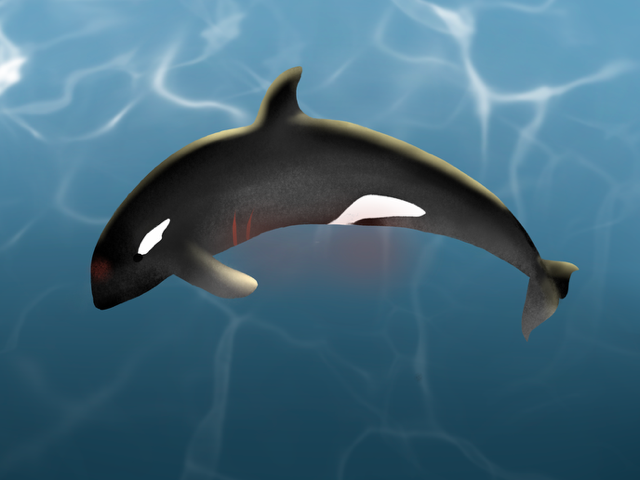Criminal offenses are being committed all across the sports world: in the US, in Scotland, even here in Westport! Every time you visit Longshore, you are a witness to this crime. Or maybe it’s not yet a crime, but it should be. Golf is a popular sport played by all sorts of people: presidents, ordinary human beings, even staff and students at CMS! Despite golf being many Westport residents’ darling hobby, it is terrible both for the environment and economically, using a lot of natural resources.
Golf’s Trash, Carbon, and Chemical Footprint
Golf is detrimental to the environment. One reason is because a lot of golf balls are lost every day. According to research done by the Danish Golf Union, around 300 million golf balls are lost each year in the United States (Wright). Pollution is a big problem in the United States and golf only adds to it. Golf balls take centuries to decompose which will become a big threat to wildlife over time, both on land and in the ocean.
In addition, preserving golf courses requires a lot of pesticides that seep into the soil and into water. This can be harmful, not only pests on the course, but nearby wildlife. For example, in 1984, a quarter of the Atlantic brant geese population in New York State died after exposure to toxic chemicals in fertilizers used in a nearby golf course (Holmes-Milner). These types of catastrophic murderings of populations take a long time to recover from, and can permanently impact an area’s ecosystem.
Lastly, golf hurts the environment because every golf course requires lots of land to be cleared and built into a perfect green lawn that is sculpted for the ideal golf experience. This can lead to deforestation and deprive native species of their natural habitats. According to the Seattle Journal of Environmental Law, “it is relatively common for developers to ravage entire ecosystems in the process. In the process of clearing all of this land, heavy machinery emits large amounts of greenhouse gases” (Rosenberg). Native species’ homes are being destroyed and populations dying because of this. Humans are also releasing a lot of greenhouse gasses that contribute to climate change. With the sheer amount of golf courses, both in the US and globally, will cause the environment to suffer over time.
Some may say the artificial grassland that golf provides can improve biodiversity. According to the United States Golf Association, “golf courses offer vast environmental value when compared to roads and buildings” (Merrick). Although it is true that golf courses are more biodiversity-friendly than roads and buildings, lots of land is often cleared for golf courses. Land that was previously a natural habitat is ruined. Golf courses do not provide more environmental value than a natural area. Golf courses are often open plains with little coverage and a lot of human interaction, making it a poor environment for animals built to live in forests.
Golf, the Hoarder of Resources.
Golf is an absolute waste of resources. Maintaining a golf course requires labor, pesticides, and a whole lot of water. What else would make the grass so green? According to the United States Golf Association, “Average daily water use for all U.S. golf courses combined accounts for around 1.5 billion gallons daily – or about 0.5% of total daily U.S. water use” (Merrick). It is unrealistic for so much water to be put towards golf. Due to climate change, there have been wildfires and droughts. What some thought would never affect Connecticut, actually has an impact. People may be having difficulty getting clean water to drink. When 1.5 billion gallons of water goes towards a golf course, it is harmful to many.
Furthermore, according to the Golf Course Superintendents Association of America, “ Golf courses are highly visible, seemingly large swaths of land, but they represent less than 0.1% of all U.S. land area” (Merrick). Some may say that 0.1% of US land isn’t actually all that much; however, that is still a lot of land. According to Daily Mail, golf courses make up 2 million acres of land in the United States (Rosenberg). This much land could easily be used for bettering the US population’s quality of life through building houses, schools, and offices.
Redemption is in Sight
Golf has already made many improvements regarding its inhumane practices. According to the Golf Course Superintendents Association of America, more than 30% of golf courses have increased wildlife habitats and native plantings. In addition, from 2005 to 2020, golf courses have decreased their overall water usage by 19%. (Merrick). This is not a lost cause. The more people who know about the terrible things that go into this sport, the more golf officials will take these complaints seriously.
In conclusion, golf contributes greatly to pollution and habitat loss while also taking up land and other limited resources. It is important that people who play golf know of its negative impact. If people still want to play golf, some things have to change.
Works Cited
Holmes-Milner, Joe. “The Grass Isn’t Always Greener: Golf Courses and Biodiversity.” Impact, 20 Apr. 2021, impactnottingham.com/2021/04/the-grass-isnt-always-greener-golf-courses-and-biodiversity/. Accessed 10 Mar. 2024.
Merrick, Brandi, and Cole Thompson. “The Environmental Benefits of Golf Courses.” United States Golf Association, 4 Apr. 2024, www.usga.org/content/usga/home-page/course-care/green-section-record/62/issue-06/the-environmental-benefits-of-golf-courses.html. Accessed 13 Oct. 2024.
Ortiz, Alex. “The Environmental Impact of Golf Courses.” The Charger Account, 1 May 2024, chargeraccount.org/5880/sports/the-environmental-impact-of-golf-courses/. Accessed 20 Oct. 2024.
Rosenberg, Lizzy. “The Environmental Impact of a Golf Course Is Sky-High.” Greenmatters, 18 July 2024, www.greenmatters.com/p/golf-courses-environmental-impact. Accessed 13 Oct. 2024.
Wright, Luke. “A recycling deep dive: Golf balls that land in water hazards often find new life.” Cronkite News, 15 Feb. 2018, cronkitenews.azpbs.org/2018/02/15/recycling-deep-dive-golf-balls-land-water-hazards-often-find-new-life/. Accessed 20 Oct. 2024

















Lucie RS • Jan 28, 2025 at 3:53 PM
I seriously had no clue this was a problem